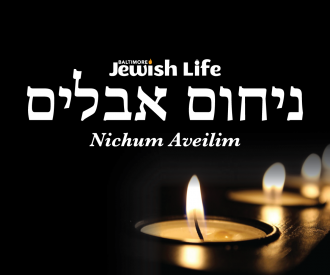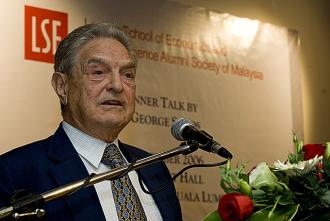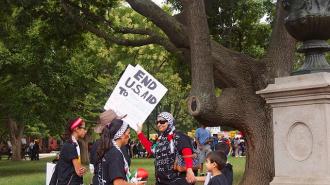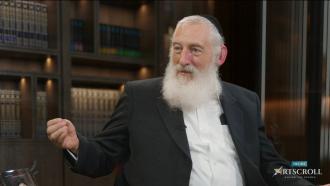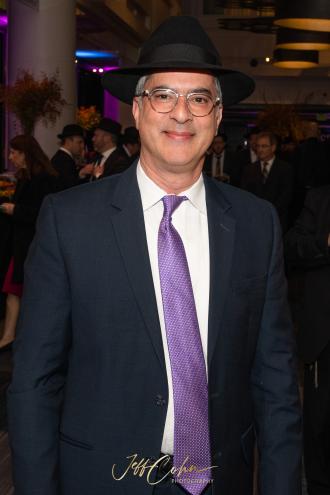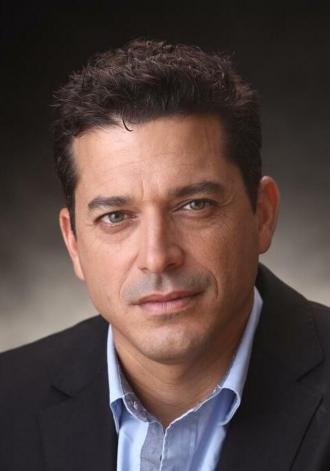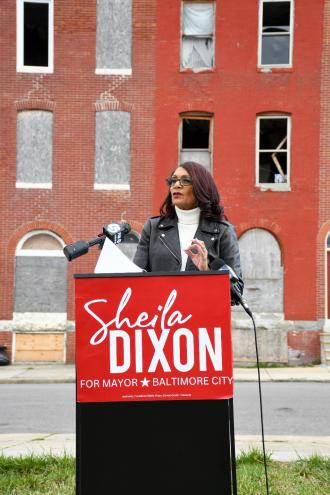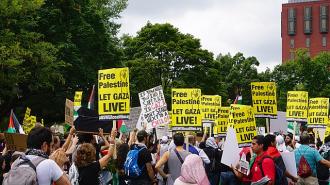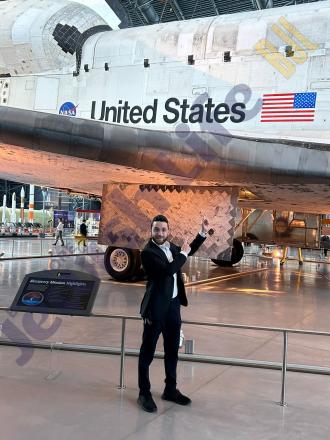Today, the second of Kislev marks the 55th Yahrtzeit of Rav Aharon Kotler, zt”l.
Every so often, individuals emerge in Jewish history who, by dint of their personality and intellect, change the very topography of Jewish life. One such person was Rav Aharon Kotler, zt’l, the founder of Beth Medrash Gavoha in Lakewood, New Jersey. His twenty years in this country profoundyly changed the face of Torah Jewry.
Interestingly enough, although the name of Rav Aharon Kotler is well known in Torah circles, very little biographical information of his earlier life in Europe is available. This is especially true for the English-reading public. In honor of the 55th yahrzeit of Rav Kotler, the Five Towns Jewish Times is presenting much new material in this mini-biography in a three-part series. The information was culled from newly available documents.
Childhood In Svisloch
Rav Aharon was born in the town of Sislevich, or Svisloch, in Belarus on the 2nd of Shvat in 5652 (Sunday, January 31, 1892, although in the Julian calendar used in Russia at the time it would have been January 19, 1892). He was the fourth child of the famed Pinnes family. There were two older brothers who passed away at young ages and an older sister, Malkah. His father, Rav Shneur Zalman Pinnes, was one of the two rabbanim of this community, which was in the Grodno section of Czarist Russia, not far from Minsk. The other rav was Rav Mordechai Shatz, the son of Rabbi Meir Yonah, who had published a copy of the Baal HaIttur.
His father’s family had spent time in the town of Ilya, also in Belarus. It was a town that produced a prodigious number of Torah scholars. Rav Yitzchok Pinnes, Rav Aharon’s paternal uncle, became the av beis din in Minsk. They were both the children of Rav Moshe Pinnes. Rav Moshe Pinnes’s ancestor was Rav Yitzchok Pinnes, who was the av beis din of Minsk from 1819 until 1836.
Svisloch was originally a moderately sized small town in the late 1700s and early 1800s, with a population of between 200 and 300 people. The Jews of the town made their money primarily through trade of timber, grains, and some real estate. The town had fairs as well. In 1830, a great fire destroyed most of the businesses, and the Jewish community had great difficulty recovering financially, as the fairs were no longer held there. In 1850, there were about 970 Jewish residents in Svisloch. After four decades of economic stagnation, the Jews of Svisloch decided to specialize in the tanning industry. They invited German craftsmen, experts in the field, to assist them in setting up a tannery. It was very successful. Soon Svisloch had eight large tanneries and a number of smaller shops. The Jewish population more than doubled, and the Jews constituted two thirds of the residents of the town.
Jews came from the surrounding towns to work in Svisloch as well. Conditions in the tanneries were not ideal for the workers. There were tanners, tailors, shoemakers, and carpenters. Many of the Jewish workers were not paid well and the Bund movement soon developed in Svisloch.
Sometime in 1895, Rav Aharon’s mother passed away. Rav Aharon was just three years old. When he was a young child, many in his town sought to involve him in the new paths that were emerging in the society around them, and these individuals were not such a good influence on the young man.
He was developing a reputation as being a remarkable prodigy. Already in 1899, at the age of seven, Rav Aharon knew all of Tanach by heart and he was also learning Gemara. Sources say that he was proficient in two tractates with Tosfos—knowing them by heart. In the meantime, the Bund was to call the first strike in Svisloch in 1901.
Svisloch’s industry grew ever stronger and plans were made to bring the railroad to Svisloch. This was to happen in 1903.
On Monday, the 24th of Av 5663, (August 17, 1903; Julian calendar August 4), Rav Aharon’s father passed away. Rav Aharon was four months shy of his twelfth birthday. After his father’s passing, he remained in Svisloch for two months.
Krinik
After the yomim tovim in 5664, Rav Aharon attended R’ Zalman Sender Kahana-Shapiro’s yeshiva, Anaf Eitz Chaim, in Krinik. Krinik was a small shtetl in a valley lying between two flat mountains in Belarus. Like Svisloch, its main industry was tanning.
Rav Zalman Sender (1851–1923) had studied under the Beis HaLevi in Brisk and was the chevrusah, learning-partner, of Rav Chaim Soloveitchik. Rav Zalman Sender was both the rav and rosh yeshiva in Krinik. Previously he had been so in Maltch (where he had remarried) and he eventually settled in the Shaarei Chessed section of Jerusalem in 1921. His son was Reb Avrohom Dov Shapiro, the author of the Dvar Avrohom, the last Rav of Kovno. Other talmidim of Rav Zalman Sender were Rav Avrohom Yaffen and Rav Isser Yehudah Unterman. His seforim were published posthumously under the title Chidushei HagraZaS on Kodshim.
There were approximately 80 students in Rav Zalman Sender’s yeshiva. It seems that Rav Aharon remained there for two zmanim. Then Rav Aharon returned to his uncle’s home in Minsk.
Minsk
Minsk was a vastly different city than any other that Rav Aharon had known. At the time there were about 40,000 Jewish residents in Minsk, and it was known as the Jerusalem of White Russia, with numerous synagogues. The majority of Minsk’s residents were Jewish.
Rav Aharon began to study in the Katzovisheh Shul (the Butcher’s Shul) in Minsk and there met Rav Yaakov Kaminetzky, zt’l, who would become a lifelong friend. This was in September of 1904. Reb Yaakov was ten months older than the young Rav Aharon, and invited him over to his home in Minsk for meals and an occasional game of chess.
Reb Boruch Ber’s Yeshiva
Rav Aharon did not return to Krinik after the yomim tovim in 1904 and instead went to Yeshiva Kneses Beis Yitzchok in Slabodka, where Reb Boruch Ber Leibowitz had just been appointed the rosh yeshiva. He was a talmid of Rav Chaim Soloveitchik. He remained there for one zman, where he made the acquaintance of talmidim in the other yeshiva in Slabodka, Knesses Yisroel. Among those talmidim was Rav Yaakov Yechiel Weinberg. Rav Aharon remained in Rav Boruch Ber’s yeshiva from after yom tov of 1904 until Pesach of 1905.
The Katzovisheh Shul
In Minsk
After the one zman learning in Kneseth Beis Yitzchok, Rav Aharon returned to his uncle’s house in Minsk and learned in the Katzovisheh Shul for twelve months. This was probably from Pesach of 1905 until Pesach 1906. Rav Aharon was 14 years old.
The Katzovisheh shul used to give the talmidim learning there a monthly stipend of 2 rubles. The better students got 3 rubles a month. Rav Aharon was given 5 rubles per month. The buying power of one ruble in 1905 Russia was about five dozen eggs or two chickens.
Rebbitzen Rachel Chadash recorded the following words about this remarkable shul:
The synagogue of butchers (the Katzovisheh shul) contained a “gathering” (Kibbutz) of youths. A “gathering” refers to a yeshiva of youths and adults, aged 18 and older, who study Torah themselves, without the tutelage of a head of a yeshiva. A volunteer from among the rabbis of the city or a guest who was learned in Torah would visit there and deliver a class to the youths of the “gathering.” Many people of the city studied in the “gathering.” It was presumed that someone who studied in the “gathering” was great in Torah.
Some of them studied Yoreh Deah in order to study for the rabbinate, and others studied Torah for its own sake. In general, this was not considered beneficial for obtaining a marriage partner. In most of Lithuania and Belarus, young scholars had an exceptionally difficult time finding marriage partners. The youths who came from nearby or faraway towns had their food provided by the butchers. They lodged in the synagogue.
The Culture Of Minsk
Minsk at the time was a hotbed both for Jewish culture as well as for Hertzl’s movement in Russia. Achad HaAm was invited to the town and a huge conference was held in Minsk in 1902 where he spoke about Haskallah. This speech was the high point of his career—packing every seat in Minsk.
Rav Aharon’s sister, Malka, also in Minsk, traveled in different circles in Minsk than her uncle, the dayan. Other family members tried influencing him and even registered him in a religious haskalah school. Of course, he did not attend.
While in the Katzovisheh Shul Kibbutz, as it was called, both Rav Aharon and Rav Yaakov were introduced to Rav Reuven Grozovsky. Rav Reuven was a student of the Alter of Slabodka, who had heard of the child prodigy known as Aharon Soslovicher. Now that he was no longer studying at the other yeshiva in Slabodka—Knesses Beis Yitzchok—and was in the active hotbed that was Minsk, getting Rav Aharon to come to Knesses Beis Yisroel in Slabodka was an imperative. Rav Reuven spoke to them in learning and convinced them of the intellectual growth that the two could achieve in Slabodka. His goal was to get them away from the influences seeking to distance them from Torah study. He recruited other Slabodka talmidim from Minsk, Asher Kerstein and Zalman Yoseph Baininson, to assist in convincing them.
He also spoke to Rav Shlomo Golovenchitz, a rosh yeshiva in Minsk who got funding for the train tickets for the two young men. The funding came from R’ Yaakov Noach Oxenkrug. The two left for Slabodka after Pesach in 1906.
Yeshiva Knesses Yisroel
In Slabodka
While in the Katzovisheh Shul kibbutz, both Rav Aharon Kotler and Rav Yaakov Kaminetzky were introduced to Rav Reuven Grozovsky. Rav Reuven spoke to Rav Shlomo Golovenchitz, a rosh yeshiva in Minsk, who got funding for the train tickets for the two young men. The funding came from R’ Yaakov Noach Oxenkrug. The two left for Slabodka after Pesach in 1906.
Minsk to Slabodka was a 180-mile train trip. Rav Aharon and Rav Yaakov decided to see Vilna on the way and got slightly lost while there.
Rav Aharon arrived in Knesses Yisroel in Slabodka after Pesach in 1906. He remained there for five years.
The origins of both yeshivos in Slabodka date back to the Kovno Kollel started in 1877, upon the return of Rav Yisroel Salanter to Eastern Europe. Rav Yitzchok Elchonon Spector had become Rav of Kovno thirteen years earlier in 1864. He passed away in 1896.
The administrators of the Kovno Kollel were Rav Avrohom Shenker and Rav Yitzeleh Blazer. Rav Blazer was with the kollel from 1880 to 1891. Rav Blazer brought in Rav Nosson Tzvi Finkel as an unofficial administrator, not yet known as the Alter of Slabodka. Rav Nosson Tzvi argued that there could be four single bachurim for every married kollel man. Slowly the kollel members were replaced by bachurim, and by 1882, there existed a fully functioning yeshiva.
A year later, in 1883, Rav Yisroel Salanter passed away, deeply affecting both Rav Blaser and Rav Nosson Tzvi Finkel. Rav Nosson Tzvi Finkel had molded the developing yeshiva by further hiring kollel members to teach the bachurim. In 1889, Rav Yitzel Rabinowitz was hired to serve as the rosh yeshiva, and he remained there for five years until 1894 when he took a rabbanus.
In his stead, in 1894, two magiddei shiur from Volozhin were hired. They were brothers-in-law, Rav Isser Zalman Meltzer and Rav Moshe Mordechai Epstein.
Rav Blaser and Rav Finkel were strong adherents of the Mussar movement, which caused some tension within the yeshiva. In 1897, a year after Rav Yitzchok Elchonon had passed away, a meeting was held by Lithuanian rabbanim, presided over by Rav Tzvi Hirsch Rabinowitz. A ruling was issued that Rav Nosson Tzvi must remove himself from the Kovno Kollel.
Rav Finkel observed the ruling and announced to the 200 students in the beis midrash that he was going to open another yeshiva in the Butcher’s Kloiz across the river. Fifty bachurim joined him, as did Rav Moshe Mordechai Epstein. Rav Isser Zalman Meltzer, who was to eventually become Rav Aharon’s father-in-law, had been dispatched six months earlier to Slutsk to start a yeshiva there. When the Alter formed his new Yeshiva, Rav Isser Zalman Meltzer returned to assist in the new yeshiva.
The new yeshiva opened in 1897 and was named Knesses Yisroel after Rav Yisroel Salanter, who had founded both the original kollel and the Mussar movement. The Alter planned to make mussar the essence of the new yeshiva. The original yeshiva took on the name Knesses Beis Yitzchok after Rav Yitzchok Elchonon Spector, the gadol of the generation.
Knesses Beis Yitzchok had a number of roshei yeshiva before they ultimately engaged Rav Boruch Ber Leibowitz. After the break, Rav Moshe Danishevsky, the Rav of Slabodka, served as the main maggid shiur. Afterward, Rav Chaim Rabinowitz, the rav of Myshad became the rosh hayeshiva. He eventually left and took a position as a maggid shiur in the yeshiva in Telze.
Slabodka technically means “suburb” in Slavic. It was originally called Vilyampoleh and was a suburb of Kovno, connected by a famous wooden bridge over the Vilaya River. The bridge cracked every year from the melting ice. The Alter used to say of this bridge, “It was always meant to be a one-way bridge—from the turbulence of Kovno to the spirituality of Slabodka.”
The seder in Slabodka began with Shacharis at 7:00 a.m. This was followed by breakfast in the stanzia, the dormitory, and seder began at 9:00 a.m. At 1:00 p.m. the morning seder was over and they davened Minchah.
At the time there were close to 400 students in the yeshiva. Some others in the Slabodka Yeshiva at the same time as Rav Aharon were Rav Avrohom Kalmanovitch, Rav Dovid Leibowitz, and Rav Chatzkel Sarna.
Slutsk
Rav Aharon left for Slutsk in 5672 (at the end of 1911). Slutsk was known as a city of die-hard misnagdim and was one of the few cities in Russia that did not develop a chassidishe contingent. In 1897, the Ridbaz, Rabbi Yaakov Dovid Vilovsky, had approached the Alter of Slabodka to open a branch of the yeshiva in Slutsk. Rav Isser Zalman Meltzer was placed in charge, prior to his coming back to Slabodka after the initial breakoff. The Alter sent 14 top students to Slutsk. Among them were Rav Laizer Yudel Finkel, the Alter’s son, who eventually became the rosh yeshiva of the Mir Yeshiva; Rav Rafael Alter Shmulevitz, father of Rav Chaim Shmulevitz; Rav Yoseph Kanovitz, eventually the son-in-law of the Ridbaz; Rav Shlomo Pletchinsky, a future son-in-law of the Alter of Slabodka; Rav Moshe Yom Tov Wachtfogel, father of Rav Nosson Wachtfogel; Rav Pesach Prusskin, rebbi of Rav Moshe Feinstein; and Rav Reuven Katz, Chief Rabbi of Petach Tikvah.
Some 300 students studied at Slutsk at one particular time—many of them future luminaries. Rav Yoseph Eliyahu Henkin, Rav Yaakov Kaminetzky, Rav Elazar Shach, and Rav Moshe Feinstein were among its students. In the early years, the Alter of Slabodka and Rav Yitzeleh Blazer would spend weeks at a time there as well.
In 1911, shortly before Rav Aharon’s arrival, the yeshiva obtained its own building. Each member of the town came and contributed to it. The entire city came out for the inauguration of the new building.
Rav Isser Zalman Meltzer wanted Rav Aharon for his daughter, Rivka Chana Perel. He was concerned that a wealthy gvir might take the initiative in taking this outstanding iluy as a son-in-law. When he heard that others had discovered the young Rav Aharon, he quickly returned to Slabodka to arrange the shidduch. Of note is that Rav Isser Zalman also sought a suitable young man for his niece, who was an orphan and whom he had raised as his own daughter. He married this niece to another young iluy, Reb Elazar Menachem Mann Shach, later to be known as the famed Rav Shach of Yeshivas Ponevezh.
Rav Aharon married and settled in Slutsk. One year later, Rav Isser Zalman asked his son-in-law to give a shiur in the yeshiva. Rav Aharon was 22 years old. Rav Isser Zalman said the shiur on Mondays and Thursdays, while Rav Aharon said the shiur on Tuesdays.
Although Slutsk was a fairly large Jewish community, the economic situation was weak, primarily because of poor transportation lines. In 1914, however, Slutsk did get its own railway station, which eased the economic situation.
Rav Aharon was 26 when his only son, Chaim Shneur, was born in 1918, in Slutsk, Russia. Only Rav Shneur and his sister, Sarah, survived infancy. Rav Aharon Kotler named his son after his first rebbi—his father, Rav Shneur Zalman Pines. However, as his father-in-law was named Isser Zalman, he left off the Zalman, naming him Shneur and adding the name Chaim, as his father had died when he was young. A few years later, the young Chaim Shneur became deathly ill and they added the name Yoseph, for a full name of Yoseph Chaim Shneur.
SLUTZK
Rav Aharon left for Slutz in 5672 at the end of 1911. Slutzk was known as a city of Misnagdim, and was one of the few cities in Tsarist Russia that did not develop a Chassidishe contingency.
In 1897, the Ridbaz, Rabbi Yaakov Dovid Vilovsky had approached the Alter of Slabodka to open a branch of the Yeshiva in Slutsk. The Yeshiva opened and attracted remarkably gifted students. Rav Isser Zalman Meltzer was placed in charge. When the Alter opened his own Yeshiva, Rav Isser Zalman returned to assist him, but returned to Slutz again after that.
In its early years, Slutzk had its share of difficulties. Some of the students wanted to introduce Haskalah into the Yeshiva’s curriculum. In 1901, when Rav Isser Zalman was away, a rebellion of sorts broke out among the student body to that effect. Some of the better students left upon this development. Among those who left were Rav Aryeh Levine, Rav Elyashiv’s future father-in-law.
Upon Rav Isser Zalman’s return, however, the Yeshiva returned.
The Alter sent 14 top students from Slabodka to Slutzk. Among them were: 1] Rav Laizer Yudel Finkel, the Alter’s son who eventually became the Rosh yeshiva of the Mir Yeshiva 2] Rav Rafael Alter Shmuelevitz, father of Rav Chaim Shmuelevitz 3] Rav Yoseph Kanovitz, eventually the son-in-law of the Ridbaz 4] Rav Shlomo Pletchinsky, a future son-in-law of the Alter of Slabodka 5] Rav Moshe Yom Tov Wachtfogel, father of Rav Nosson Wachtfogel 6] Rav Pesach Prusskin, Rebbe of Rav Moshe Feinstein 7] Rav Reuvain Katz, Chief Rabbi of Petach Tikvah
Some three hundred students studied at Slutzk at one particular time – many of them future luminaries. Rav Yoseph Eliyahu Henkin, Rav Yaakov Kaminetsky, Rav Eliezer Shach, Rav Moshe Feinstein were among its students. In the early years, the Alter of Slabodka and Rav Yitzeleh Blazer would spend weeks at a time there as well.
In 1911, shortly before Rav Aharon’s arrival, the Yeshiva obtained its own building – each member of the town came and contributed to it. The entire city came out for the inauguration of the new building.
In 1912, Rav Aharon’s uncle in Minsk, Rav Yitzchok passed away.
Rav Isser Zalman Meltzer wanted Rav Aharon for his daughter, Rivka Chana Perel. He was concerned that a wealthy gvir might take the initiative in taking this outstanding iluy as a son-in-law. When he heard that others had discovered the young Rav Aharon, he quickly returned to Slabodka to arrange the Shidduch. Rav Isser Zalman’s daughter was significantly taller than her Chosson, who was only 5”4, but this did not matter to either of them. Of note is that Rav Isser Zalman also sought a suitable young man for his niece, who was an orphan and whom he had raised as his own daughter. He married this niece to another young iluy, – a certain Reb Eliezer Menachem Mann Schach, later to be known as the famed Rav Schach of Yeshivas Ponovech.
Rav Aharon married in the winter of 1914 in Slutzk and settled in Slutzk as well. At his Sheva Brachos he delivered a very deep and sharp discourse. Rav Avrohom Elya Kaplan, one of the sharpest bochurim in Slabodka was present at the wedding and then and there produced a remarkable pilpul in song.
One year later, Rav Isser Zalman asked his son-in-law to give a regular shiur in the Yeshiva. Rav Aharon was twenty-two years old. Rav Isser Zalman said the shiur on Mondays and Thursdays, while Rav Aharon said the shiur on Tuesdays.
Although Slutzk was a fairly large Jewish community, the economic situation was weak, primarily because of poor transportation lines. The Tsarist government in an effort to catch up to the west continued its program of industrialization, and in 1914, Slutzk did get its own railway station, which eased the economic situation.
Tsarist Russia was undergoing change, however. Bread riots in Petrograd caused the absolutely unexpected to happen. On March 15th, 1917 the Tsar abdicated the throne. It was soon replaced with a provisional government which was to create the basis for a new, democratic Russia.
Five days later on March 20th, the Provisional Government abolished all of the anti-Jewish legislation of the Tsarist government. The Jews, of course, were elated. But the future was to bring matters of a decidedly anti-Jewish nature to the fore. The Bolsheviks revolted, a civil war emerged between them and the anti-Bolshevik forces known as the “White Russians” emerged as well. The Bolsheviks soon took over the Provisional Government and succeeded in expelling the anti-Bolsheviks from Southern and Western Russia.
The Jews were carefully monitoring the developing situation. But life continued. Rav Aharon was 26 when his only son Chaim Shneur was born in 1918, in Slutsk, Russia. Only Rav Shneur and his sister, Sarah, survived infancy. Rav Aharon Kotler named his son after his first Rebbe – his father, Rav Shneur Zalman Pines. However, as his father in law was named Isser Zalman, he left off the Zalman, naming him Shneur and adding the name Chaim, as his father had died when he was young. A few years later, the young Chaim Shneur became deathly ill and they added the name Yoseph, for a full name of Yoseph Chaim Shneur. Boruch Hashem, he fully recovered from his illness.
WORLD WAR ONE
The world war affected the Torah world significantly. The Slabodka Yeshiva was in a state of disarray with the Yeshiva students dispersing everywhere. About forty of Slabodka’s students gathered in Minsk to learn under Rav Aharon’s friend, Rav Reuvain Grozofsky. Rav Moshe Mordechai Epstein wrote to Rav Reuvain and Rav Reuvain arranged for a partial re-establishment of the Yeshiva in Minsk. The rest of the Yeshiva went deeper into Russia with the Alter and eventually studied in the city of Kremenchug in the Ukraine. Knesses Bais Yitzchok, the other Yeshiva in Slabodka also settled there in the aftermath of the first world war. Later, the Alter’s Yeshiva was re-established in Slabodka under German rule with the assistance of Dr. Leo Deutschlander and Rav Yoseph Tzvi Carlebach, leaders of the Bais Yaakov movement.
At the dawn of the First World War in 1913, most of the students of the Yeshiva in Slutzk wished to avoid the Russian draft and left the Yeshiva. The financial situation also caused wide panic. Rav Isser Zalman was to later say, “The World War destroyed the Yeshiva and also destroyed me.”
As town by town was being taken over by the Bolsheviks in their rise against the new Provisional Government of Russia and the anti-Bolsheviks, students from these towns desperately wished to return and visit their parents to assist and help. The Yeshiva offered them any assistance they could render.
The Bolsheviks confiscated the beautiful and historic shuls and buildings of Slutzk. They attempted to deport the leaders of the community to Siberia. Yet the Yeshiva tried to remain in the city and outlast the communists. One police chief of the city who was particularly cruel was the recipient of a cherem of a number of the Slutzk Torah leaders (among them Rav Shach). He was bucked off his horse and trampled to death.
Notwithstanding the vicissitudes of the war and of the challenges that the Bolsheviks placed in front of them, Rav Aharon’s shiurim were masterpieces of depth and analysis. He became his father-in-law’s right arm in leading the Yeshiva. After the Russian Revolution broke out, Rav Aharon saw that Slutzk would not be free of Bolshevik hands and looked for alternatives and indeed the new Soviet regime banned Torah study and began to persecute those teaching Torah. Rav Aharon and Rav Isser Zalman were both arrested a number of times, beaten and threatened with death. These threats were no laughing matter, those years saw the onset of the murder of tens of millions of Russian citizens by the Bolsheviks and first and foremost on the enemies list were the Torah scholars and teachers who refused to bend to the prohibition on the practice and teachings of Judaism.
Among some of their persecutors were Jews who were formerly Orthodox and who had left Torah for the new alternatives that were then raging throughout Europe. Rav Aharon personally knew some of these persecutors. One particular persecutor Rav Aharon had met in Minsk and other cities through the years and knew well who he was. Due to Rav Isser Zalman’s prominence as the Rav of the city it was difficult for him to escape the Soviets, and as such he made the decision that Rav Aharon should leave first. Rav Isser Zalman would follow later on. He told his son-in-law that they would read the Megillah together on Purim. Each of them was to make a daring and perilous escape across the border.
KLETZK
On November 5, 1916, the Central Powers proclaimed a new independent Polish state. It was a state with as-yet undefined borders. Everyone was watching carefully. There were discussions and debates about who would be eligible to be citizens. Large numbers of Jews had fled their previous residences in what would become Poland and wished to return. Poland eventually emerged as a state with its own defined borders, including a city called Kletzk.
Rav Isser Zalman and Rav Aharon moved the Yeshiva to Kletzk, fifteen miles west of Slutsk in the newly independent Poland.
Kletzk had a vibrant Jewish life that dated back hundreds of years. Its total population was about 8000, and 6000 of the residents were Jewish. Rav Isser Zalman later went to establish Etz Chaim in Jerusalem, while Rav Aharon stayed on in Kletzk.
The situation in Slutzk deteriorated rapidly and those who remained in Slutzk had to leave. Rav Aharon strongly pushed his father-in-law to make the move as soon as it was feasible. Rav Isser Zalman finally arrived in Kletzk on Thursday, March 1st 1923 – it was Taanis Esther, Erev Purim in 5683.
Poland, once an independent country, was occupied by Russia, Prussia and Austria for 123 years. But after World War I, all three of these occupiers were in trouble. Germany had lost the war. Russia was facing a revolution and the Austro-Hungarian Monarchy was rapidly falling apart.
Polish nationalism was on the rise and took over. In 1918, Poland once again gained independence and was known as the Second Republic of Poland. Rav Aharon took notice of this and after five years of Polish independence, the Yeshiva would move to Poland.
Although newly reformulated, Poland was home to Europe’s largest Jewish community. Russia, which for centuries housed Jews, had become completely communist. Many thought the future for the Jewish people would lie in newly independent and free Poland.
This is not to say that Poland was ideal. Poland had a highly anti-Semitic party dating back to the 1890’s, called the Endecja, which advocated the slogan “Poland for the Poles.” This group was the Polish National Democratic Party and they called for the exclusion of Jews from Polish political and economic life. Followers of this party were called “Endeks.”
Very shortly, however, the Slutzk Yeshiva was transferred to the city of Kletzk in Poland and it soon became a fortress of Torah for the Polish Jewish community. Rav Isser Zalman initially delivered shiurim in the Yeshiva and in his home. At home he taught Shulchan Aruch Choshain Mishpat.
AGUDATH ISRAEL
After Germany had conquered sections of Poland from Russia, the German government asked some of its German Jewish citizens for advice and assistance in now to administer such sections as Warsaw, now under German control. One such expert was Ludwig Haas, a Reform Jew and member of the German Reichstag who had succeeded in doing away with traditional Jewish education and implementing far-reaching reforms in education in his hometown of Baden Germany.
The Polish Rabbis were very concerned and reached out to the Orthodox Jews of Germany for advice and help. Somehow, the German government appointed two Orthodox Jewish experts to assist them, Rabbi Dr. Pinchas Cohn and Rabbi Emanuel Carlebach. These two individuals reached out to Polish Jewry and helped them organize.
Thus, Agudath Israel in Poland, started by orthodox Jews in Germany and backed by the Gerrer Rebbe and others, was born. Soon it morphed into a political party in the newly formed Second Republic of Poland. It began to take an active role in ensuring that the secularization processes that existed in Russia and in Germany did not develop in Poland too. Rav Aharon’s experiences in Russia cemented his appreciation of the need for such an organization and he soon became an active participant.
In the winter of 1924, Rav Isser Zalman emigrated to Eretz Yisroel and Rav Aharon was left to direct the Yeshiva in Kletzk by himself. In a very short amount of time, under the direction of Rav Aharon, Kletzk developed a reputation as one of the leading Yeshivos in Europe – eclipsing other Yeshivos that were much older and more established. Rav Aharon’s reputation grew by leaps and bounds as well. Throughout Europe it was known that the finest of Bochurim should attempt to learn by Rav Aharon. Rav Kotler’s reputation as an outstanding Gadol and Illui spread far and wide, and he joined in gatherings among the elder Roshei Yeshiva of Europe, such as Rav Boruch Ber Leibowitz, Rav Shimon Shkop, Rav Naftoli Trop. They treated him like an equal – notwithstanding that he was an entire generation younger than them.
An interesting example of this can be seen from the following episode. The Agudas HaRabbonim convened in 1924, and a leading Rabbi in Lublin, Rav Alter Azriel Meir Eiger (1873-1941), a great great grandson of Rabbi Akiva Eiger of Posen, proposed a new halachic innovation. He suggested that any Jewish person embarking upon a career in business, should first draft a letter to be left with the Rav of his town that all of his business dealings will be done in accordance with a heter iskah.
The proposal was revolutionary but halachically problematic. The idea was printed in the Kovetz Drushim of the Agudas HaRabbonim of that year (Vol. II #38). In the next edition of the journal, Rav Kotler penned a response. He meticulously examined every issue Rav Eiger brought up, and with halachic mastery marshaled arguments against it. The idea was never taken up.
In early 1925, Rav Aharon and his wife had a baby girl, whom they named Sarah. She was born in Kletzk.
During this period, Rav Aharon was described by his students as a maayan of Torah with an unceasing flow. Indeed, many of his Talmidim were intimidated by his masterful grasp of every sugyah in Shas. Rare was the student who could develop the “audacity” to challenge Rav Aharon’s mehalech in a sugya. When it came to Torah study, Rav Aharon was fierce, and was not known to treat his Torah sparring partners with “kid gloves.”
And yet Rav Aharon’s love for his students was such that he was concerned for both their spiritual development as well as their physical needs. He made sure that each student had the basic necessities. One student once needed a new pair of shoes. Immediately, Rav Aharon stepped outside and returned with a pair for the student. Only later did someone discover that the pair was purchased for Rav Aharon in order to make the cold fundraising trips that were necessary for the Yeshiva. Rav Aharon refused to keep specific hours for the students to speak to him in learning, as the other members of the hanhallah had advised. “How could he be unavailable to students who wished to discuss Torah?” he would ask.
Talmidim of Kletzk later took prestigious positions throughout the Torah world. One Kletzker Talmid remembered that of all the students who went through Kletzk there was an outstanding Ilui to whom Rav Aharon had paid special attention. His name was Dovid Pfefferman. He was, unfortunately, murdered by the Nazis yimach shemam.
Rav Aharon’s love and chessed for Klal Yisroel was not just for Bnei Torah. There is a vivid and moving memoir of a young woman, Sara Gelfand, who escaped the ravages of the war and was assisted at the time by the Kletzker Rabbi, Rav Aharon Kotler. There were many others too.
The new building in Kletzk was dedicated in 1927. The builders who built the large edifice donated the entire Mizrach Vant out of their own pocket. A photograph of the large group was taken. It was a moment of pride for the entire town as well as the entire Yeshiva. The town and the Yeshiva were unusually integrated, with the Yeshiva adopting the customs of the town. The event was so significant that Rav Isser Zalman returned from Eretz Yisroel to be present at the event. At the building’s dedication, Rav Chaim Ozer Grodzinsky remarked that the Kletz Rosh Yeshiva, was the Rabbi Akiva Eiger of the generation.
Rav Aharon’s wife served as the Yeshiva’s secretary. She would often write the correspondences of the Yeshiva, and her husband would sign them. Her handwriting was particularly neat. One time, the son of the local hardware store owner, a student of Rav Elchonon in Baronovich, needed a letter of recommendation to the Yeshiva in Kobrin, Rav Aharon dictated the letter to her and she signed it.
The Beis HaMidrash was fairly large. In an era with no microphones, the Talmidim would all stand to hear Rav Aharon lecture from the Bimah facing them. They would all leave their benches and shtenders and stand up to hear Rav Aharon deliver a shiur. Rav Aharon would deliver shiurim twice a week. But he was always available to discuss the shiurim. Some of the Talmidim wore gray fedoras with black stripes. Others wore caps. But all listened with attentive rapture. Those who had studied in Kletzk were known as the elite Bochurim in Europe.
The davening occurred in the Beis Midrash. Rav Aharon was very careful to ensure that each of the students kept the first time for Shma – that of the Mogain Avrohom. This was interesting because Rav Aharon identified strongly with the Vilna Gaon.
The Aron Kodesh was a round wooden structure with a dark Paroches around it. The Mizrach vant had bare walls. The library housed thousands of seforim. Each sefer had a sticker upon it indicating where it should be returned, just like in other Yeshivos all over the world. Rav Aharon had his own study in the Yeshiva too. There was a dormitory. On the top floor was Rav Aharon’s quarters. The Talmidim would sometimes come to his quarters. At times the number of Talmidim in the Yeshiva exceeded 250 bochurim. A top Talmid would sleep in Rav Aharon’s study when there were no other beds. This was the Yeshiva that was Kletzk, the apple of the eye of the Torah world across the globe.
In 1933, a young man, Yoel Klapt, approached him with a question about swearing falsely. He escaped his home country to study in Poland. He had a false passport that said he was born in Baronovich. When he wished to return home they asked for his birth certificate which stated that he was born in Baronovich. If he were to swear falsely, they would believe him and allow him to return. What should he do? Rav Aharon weighs the issue carefully. Unfortunately, we do not know what his final answer was.
In 0ctober of 1936, while in Kletz, Rav Aharon penned a letter to Rav Bick in the United States regarding the permissibility of opening up of a refrigerator door on Shabbos. He also responded to an inquiry from Rav Bick on the issue of renting stores to Shabbos violaters and whether that constituted Lifnei Iver or not.
To be continued...

